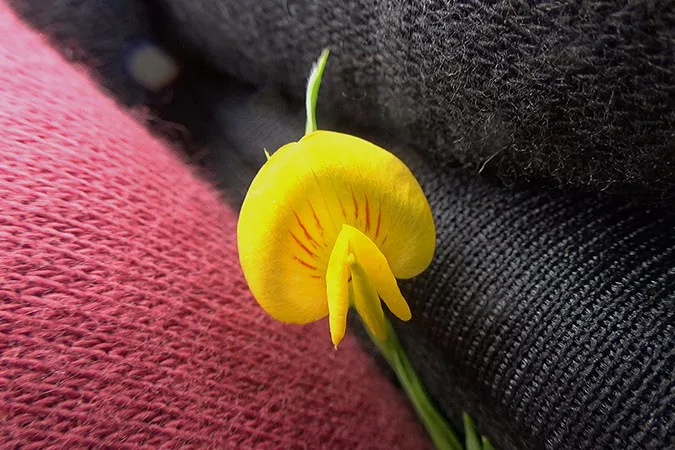Culup (Zornia gibbosa) is a species of plant in Fabaceae, shrub, perennial, up to 50 cm high, sometimes with thick tubers, slender stems, many branches and green or dark red, grows wild in sandy, calcareous soils and karst.
Z. gibbosa has an upright trunk, cylindrical, many branches and green or brownish red. The leaves are elongated, 0.8-2.5 cm wide, 0.3-0.9 cm long, pointed tip, green, a bone in the middle with several sideways veins.
Inflorescences appear on the axillary, 2-6 cm wide, ovate, 6-7 mm long, ciliate margin. Calyx 3 mm. The corolla is circular, bright yellow in color with reddish-brown stripes. Legumes are usually longer than bracts.
Culup grows on sandy, calcareous soils, karst slopes, agricultural lands, abandoned land, lots of sunshine, tropical climate, wind resistance and adaptive at an elevation of 100-1200 m.
Kingdom: Plantae
Phylum: Tracheophyta
Subphylum: Angiospermae
Class: Magnoliopsida
Order: Fabales
Family: Fabaceae
Subfamily: Faboideae
Tribe: Dalbergieae
Genus: Zornia
Species: Zornia gibbosa
Z. gibbosa has an upright trunk, cylindrical, many branches and green or brownish red. The leaves are elongated, 0.8-2.5 cm wide, 0.3-0.9 cm long, pointed tip, green, a bone in the middle with several sideways veins.
Inflorescences appear on the axillary, 2-6 cm wide, ovate, 6-7 mm long, ciliate margin. Calyx 3 mm. The corolla is circular, bright yellow in color with reddish-brown stripes. Legumes are usually longer than bracts.
Culup grows on sandy, calcareous soils, karst slopes, agricultural lands, abandoned land, lots of sunshine, tropical climate, wind resistance and adaptive at an elevation of 100-1200 m.
Kingdom: Plantae
Phylum: Tracheophyta
Subphylum: Angiospermae
Class: Magnoliopsida
Order: Fabales
Family: Fabaceae
Subfamily: Faboideae
Tribe: Dalbergieae
Genus: Zornia
Species: Zornia gibbosa
